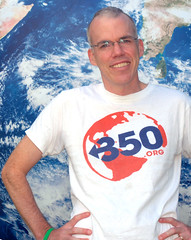Oroeco is running a campaign to “realign the economy for GOOD!” This group has developed an app that tracts the sustainability of individual spending and investment choices. With the app, an individual can “link his or her spending and investment transactions to scientific data that calculates the impact of each choice. In addition to improving the environment, participants can compete against friends and earn “oro” points, which can be cashed in for both virtual and real world prizes. This program clearly allows people to make better environmental choices and encourages businesses to produce more sustainable products or lose money.
Oroeco recently launched a campaign on the crowd funding platform, Indieggo, as a means of acquiring additional fucning to complete the app. The campaign specifics are presented in the exceptional Indieggo style– very clear and concise with top tabs and sidebars that thoroughly detail all the aspects of the application, including galleries, updates, comments and funders. There also is a bar graph that accurately notes the funding received to date, as well as a clock that displays the time remaining in the campaign.
The Oroeco app that they are working to launch, more specifically, provides useful tools to aid users in their education on the personal impacts of their spending and investment choices. The Oro 1.0 app, as it is called, tracks spending transactions and provides a visual of the climate change impact of each transaction a person makes. It allows users to set goals, and it gives reminders to fulfill them. Users can customize the appearance of their Oroeco profiles, and they can compare and compete against friends to earn rewards for better investments. There also is a sidebar which delineates perks for the different levels of contributions, the expected dates of delivery, and the number of perks available, as well as the total already claimed.
Oroeco is extremely passionate about climate change and has truly developed a unique program to involve each of us in the movement to live green. Unlike most current “green” applications, Oroeco uses scientific data to provide a clear picture of the impact of our personal choices on the environment. Oroeco is backed by a solid team of scientists and engineers to accomplish this goal. Ultimately, in order to be successful, the company needs funds to pay for a user interface designer to make its platform totally functional.
The idea here is a great one worthy of consideration and support. Please go to http://www.indiegogo.com/oroeco to learn about this exciting project. LGBG encourages support for Oroeco financially so that we all can benefit from its work to help people and live green, be green.










